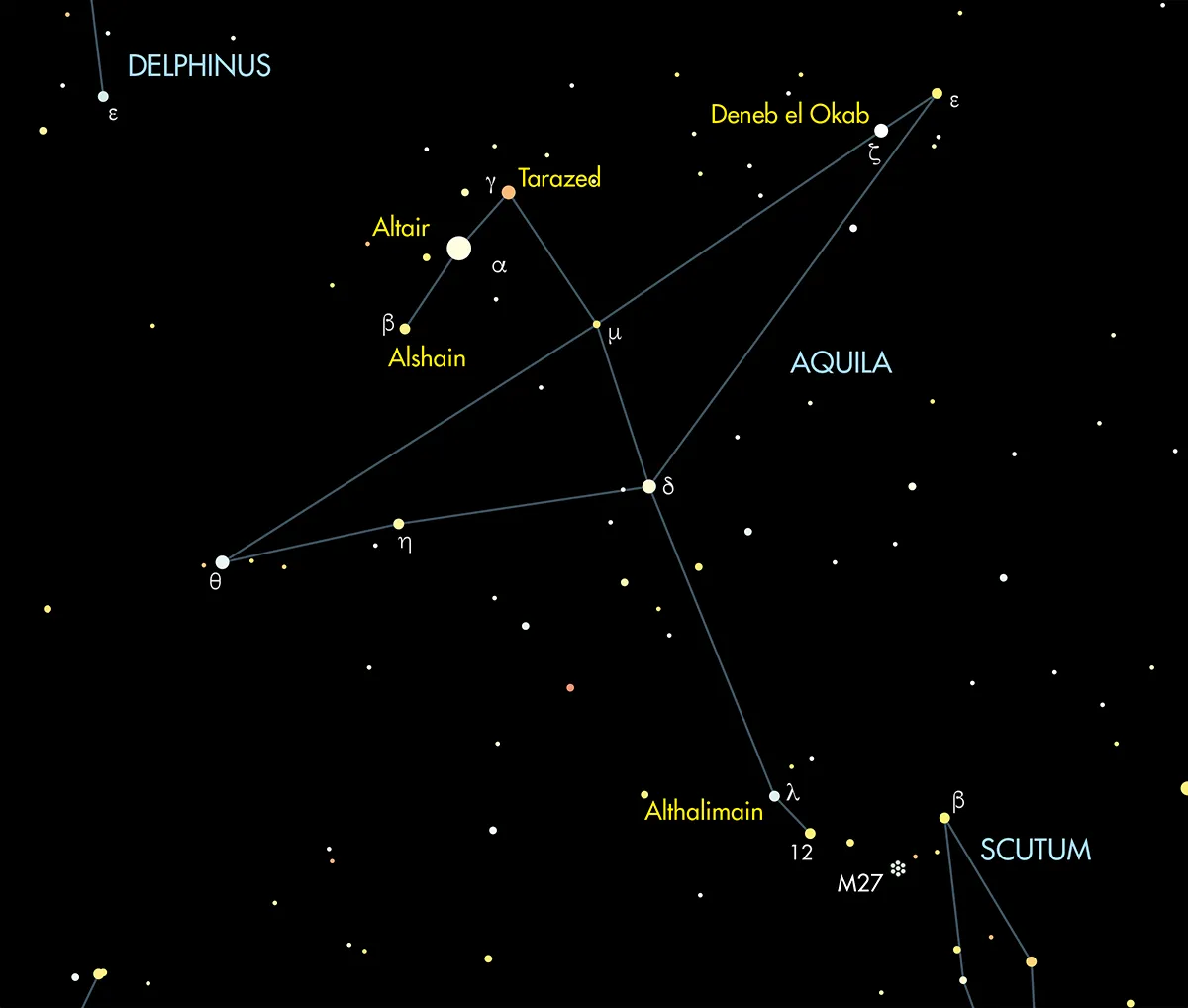Altair is the brightest star in the constellation of Aquila, the Eagle. It also marks the southern vertex of the large and distinctive asterism known as the Summer Triangle.
Altair is itself distinctive because of two dimmer stars that appear to sit on either side of it.
These are mag. +2.7 Tarazed (Gamma (γ) Aquilae) to the north-northwest, and mag. +3.7 Alshain (Beta (β) Aquilae) to the south-southeast.
Blazing away at mag. +0.8, Altair easily outshines both of them and together the trio are known as the ‘Shaft of Aquila’.

Altair is a relatively close neighbour to the Sun, lying at a distance of 16.7 lightyears.
It has three fainter companions located under 200 arcseconds distant from it.
The multiple star designation of Altair is WDS 19508+0852A with the companions ending in B, C and D.
Mag. +9.8 B (192.1”, PA 287°) is not gravitationally connected with Altair (A), having a purely line-of-sight proximity.
The other two stars are mag. +10.3 C (189.6”, PA 107°) and mag. +11.9 D (31.7”, PA 97°).
Physically Altair’s radius is 1.8 times larger than our Sun’s with a luminosity 10.6 times greater.
Its close proximity has allowed its apparent disc size to be directly measured as 3 milliarcseconds.

Compared to the Sun, Altair is a fast rotator, spinning once on its axis every 8.9 hours.
This causes the equatorial regions of the star to bulge outwards and results in an effect known as gravity darkening where the equatorial zone is less luminous than the poles.
The degree of oblateness is such that the equatorial diameter is 25% larger than the polar diameter.
The spin axis is inclined to our line of sight by around 60°.
To find Altair in the night sky, first locate the Plough in Ursa Major and then look above and to the left to see the distinct stars of the Summer Triangle.
Altair is the leftmost star in the Summer Triangle asterism.

Of the three stars in the Summer Triangle, Altair is physically the dimmest.
Mag. +0.0 Vega outshines it despite lying over eight lightyears further away.
The visually dimmest star to our eyes is mag. +1.25 Deneb. However, Deneb is estimated to be around 2,600 lightyears away, so in reality it is very luminous indeed.
This guide originally appeared in the July 2018 issue of BBC Sky at Night Magazine.
